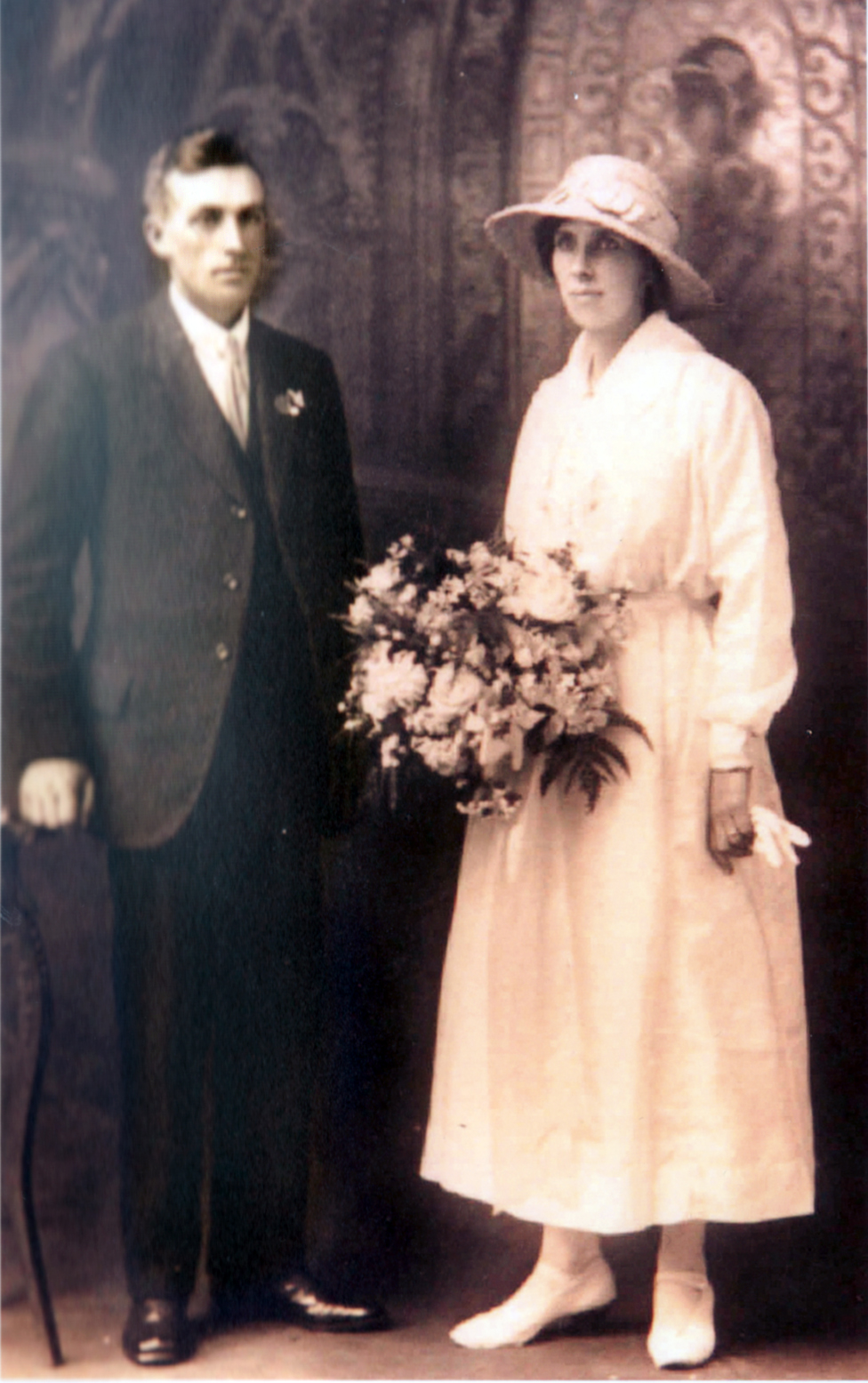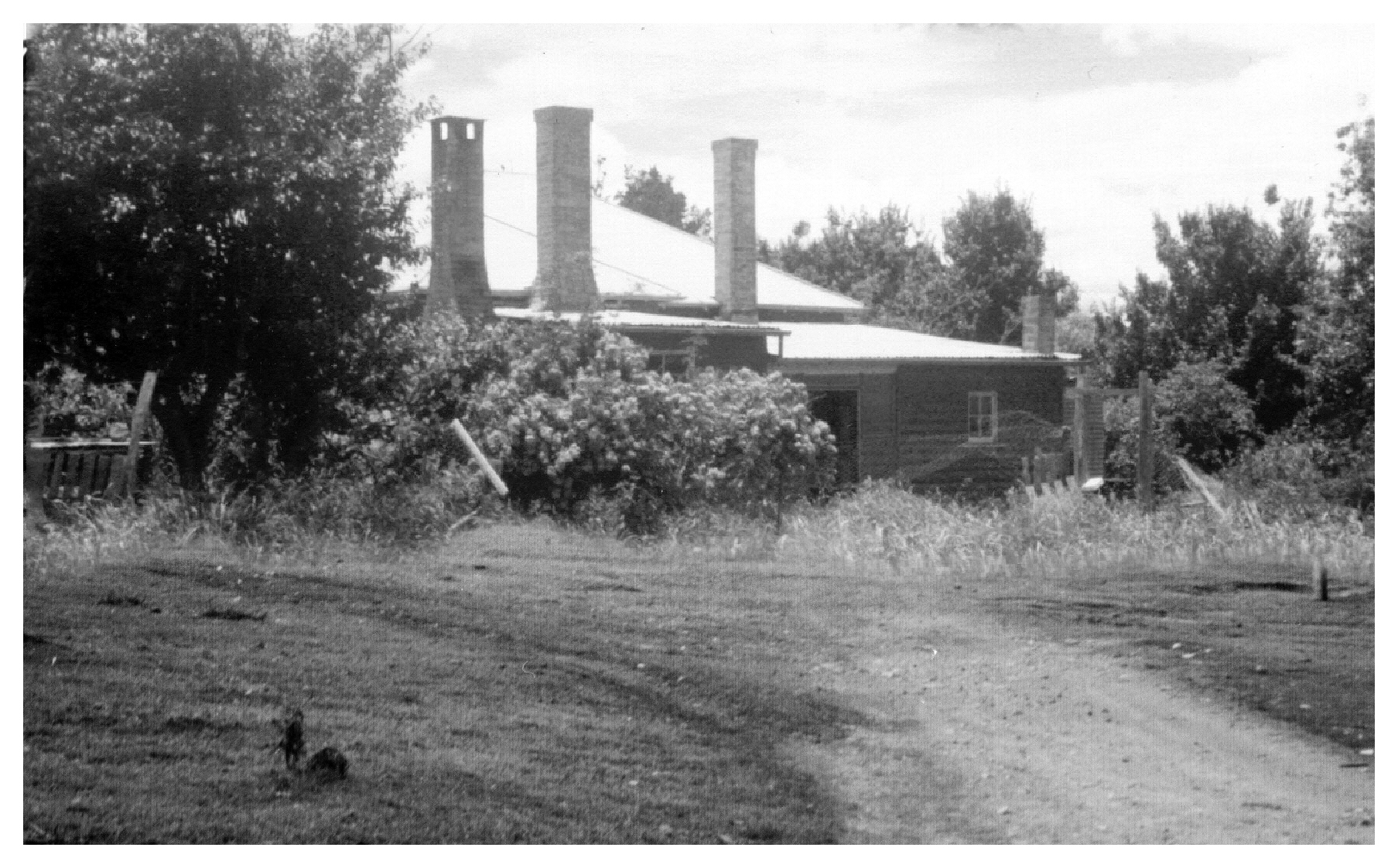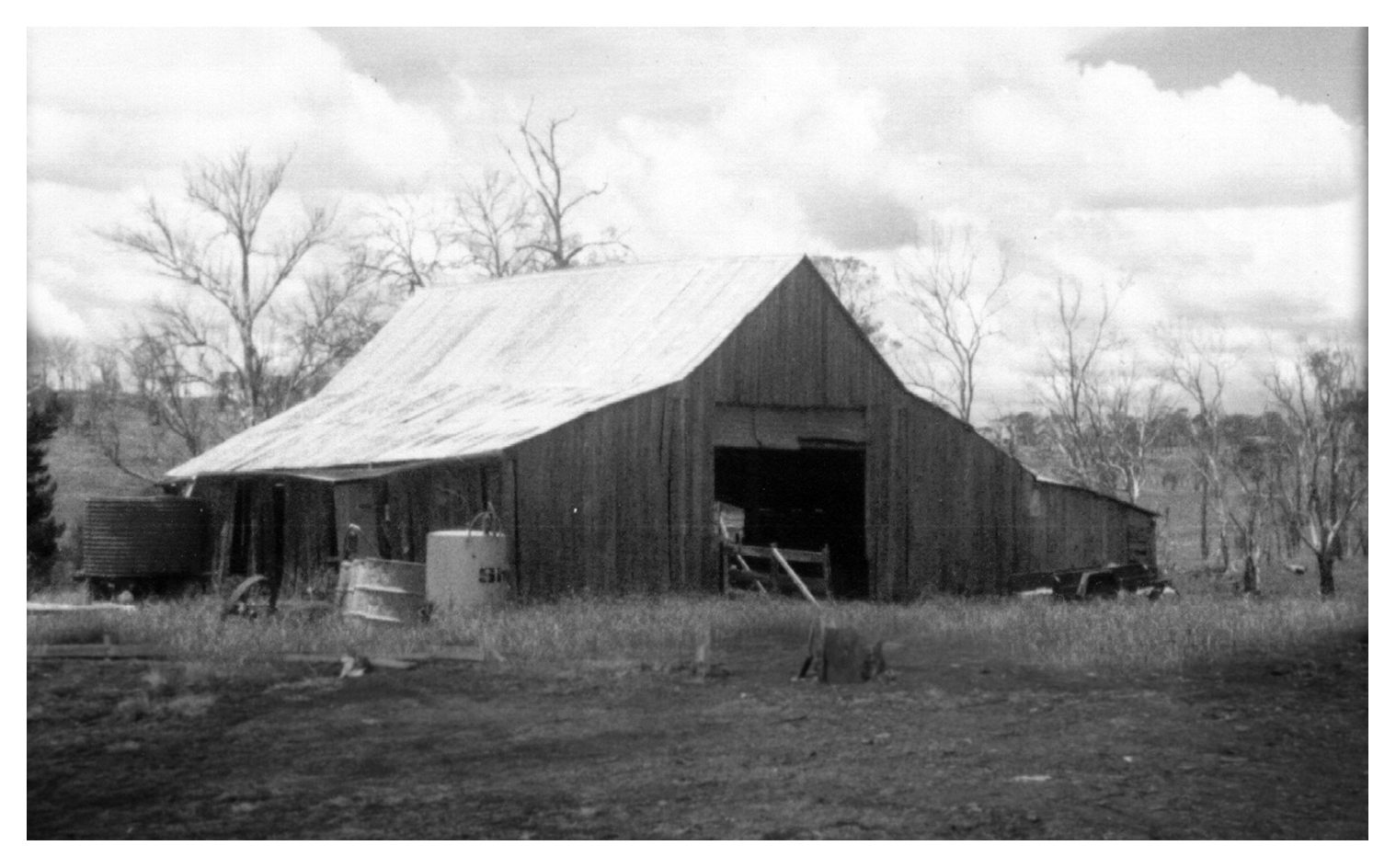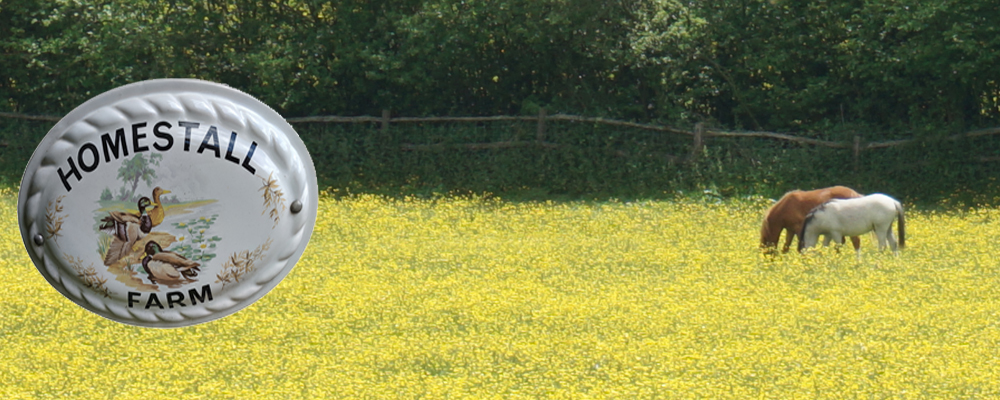
Isabella
'Jennie' Martin (1891-1985)

- Birth:
- 2 December, 1891, Homestall Farm, Ashurst Wood, Sussex
- Marriage:
- James Henry ("Harry") Davidson, 12 September, 1918, Glen Innes, NSW
- Death:
- 21 November 1985, Glen Innes
- Father:
- William Martin
- Mother:
- Hannah Brown
- Children:
- David James (1919-2017)
- Norman Graham (1920 - 2021)
- Edmund Bramwell (1922-2011)
- Helen Glenmire (1923-1951)
- Hannah Jean (1924 - 2020)
- Eric Bruce (1929-2014)
The West Sussex village of Ashurst Wood is a charming little backwater, and a local farm, Homestall, is hidden even further away. In the 21st century, the farms around are mostly horse studs, riding stables and general agriculture. Homestall Farm is where Isabella Jane, more commonly known as Jennie, was born, although, since her father was an agricultural labourer, it's unlikely she was born in the main house on the estate but rather one of the cottages there.. For a few years at least, she lived on the farm with her mother Hannah, her half brother Bramwell, her father William Martin, and her grandmother, Hannah's widowed mother, Mary Ann Brown.
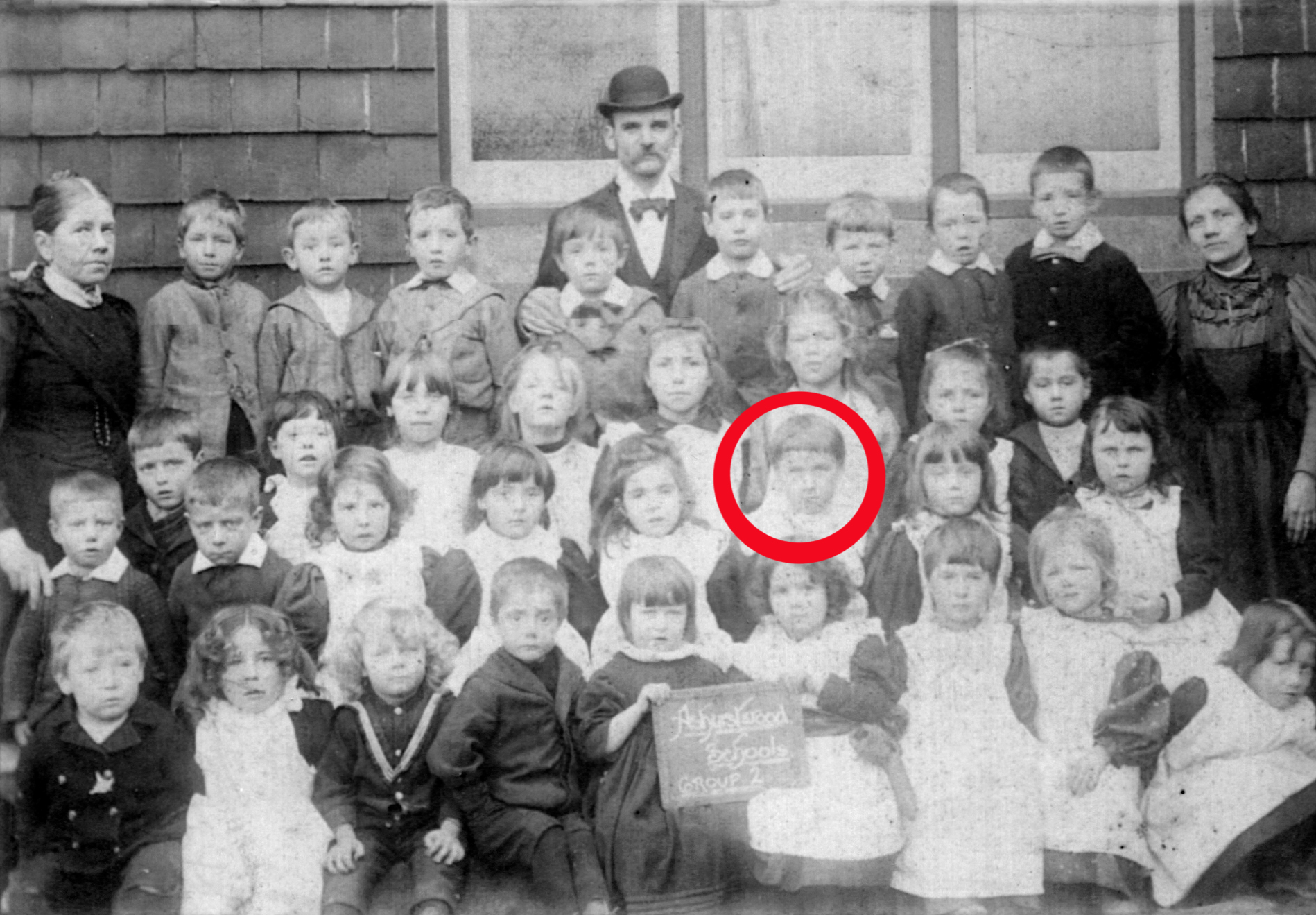
1890s Ashurst Wood school class photo, with Jennie Martin circled.
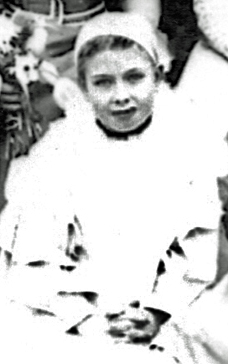 Jennie's
local school was 2.5km away in Ashurst Wood, Our only record of
her school years is her first grade photo, and how long she stayed
at the school isn't known.
Jennie's
local school was 2.5km away in Ashurst Wood, Our only record of
her school years is her first grade photo, and how long she stayed
at the school isn't known.
Some time in the 1890s, her mother took her daughter, leaving her husband behind, and went to work as a housekeeper on a farm some 30kms away in Hurstpierpiont. On the 1901 UK Census, Hannah declared she was a widow, stretching the truth just a little - her husband didn't die until a year later, but by then, Hannah and Jennie were long gone. The Kents Farm cottages where Hannah worked, were three kilometres from the village of Hurstpierpoint, which is still considered a village, but it's a much bigger centre than Ashhurst Wood.
left: In 1899, mother Hannah and Jenny attended a wedding at the seaside resort of Brighton, and Jennie, then eight years old was photographed with the rest of the bridal party.
Domestic occupations were the most common for women, young and not so young, and this would have been Jennie's path in life - except she followed it in Australia, not England. When she was 19 years old, her sense of adventure encouraged her to not only leave home, but to set sail on the SS Oswestry Grange headed for the Queensland capital, Brisbane in January, 1910. According to tales handed down in the family, Jennie struggled with seasickness and life aboard the steamer, and when the vessel docked in the north Queensland port of Cairns, she opted for the feel of land beneath her feet. On the ship's passenger list, her occupation was given as "housemaid", but that probably didn't prepare her for life working in a laundry firstly in Cairns itself, then in the small town of Innot Hot Springs, near Mt Garnet, south west of Cairns in the Atherton Tablelands in far north Queensland. Her son Norman says that his mother often spoke of "The Springs" and how hot and dry it was when she was there. It would have been a great contrast with the green fields around her home in Sussex.
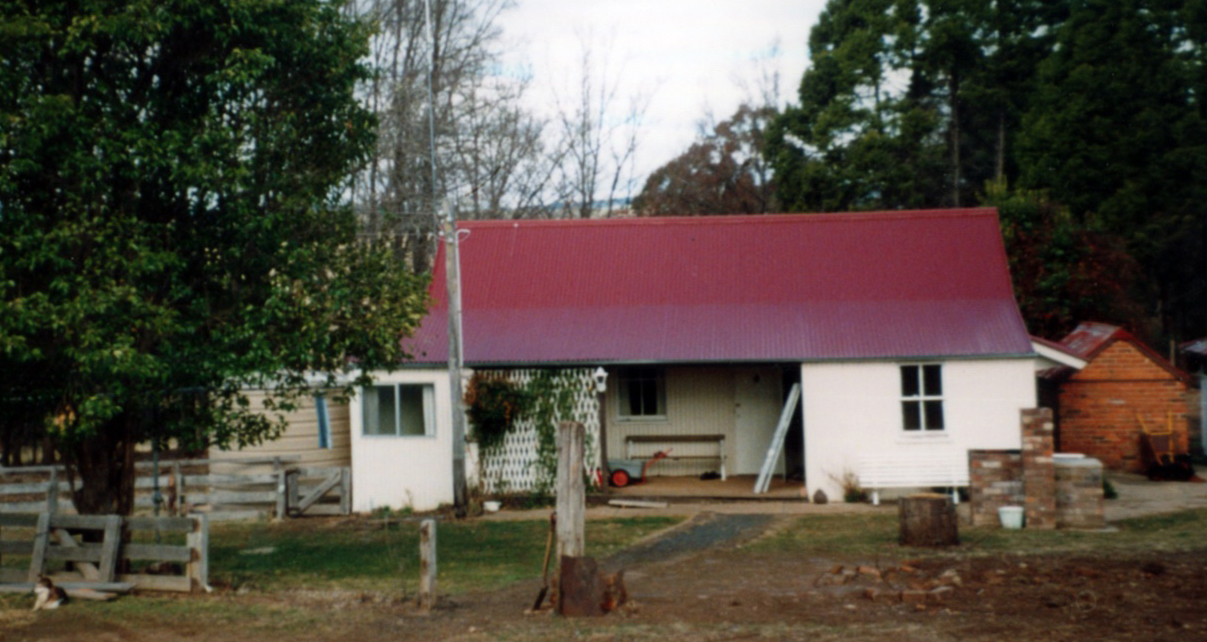
How long she stayed in north Queensland, and how she made her way south is a mystery - her family say she didn't tell them much about that period. The next snippet of information we have is that somehow, she came to the 1000km south to the Guyra area of the New England tablelands of New South Wales and worked as a housemaid on the property known as Cabarfeidh. This is known only because it's mentioned on her marriage certificate to Henry James ("Harry") Davidson. Cabarfeidh and Harry's grandmother's home at Wandsworth where he grew up are only five kilometres or so apart, but it's not known if Jennie arrived there before Harry left for service in World War 1 or if they met soon after his return from Europe.
right: The "cook's house" at Cabarfeidh, the property where Jennie was a housemaid before her marriage
When Harry returned from the war, he took up farm work at Lamb's Valley, near Glen Innes, and he and Jennie married in Glen Innes in 1918.
